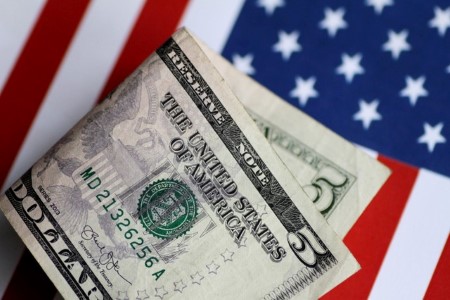




Quarterly Economic Growth Release: More BSP cuts to come
 DOWNLOAD
DOWNLOAD

Monthly Economic Update: Fed catches up
 DOWNLOAD
DOWNLOAD

Inflation Update: Steady and mellow
 DOWNLOAD
DOWNLOAD


Firm dollar turns up heat on yen, heightening intervention talk

TOKYO, April 23 – A firm dollar had the yen locked near a fresh 34-year low on Tuesday, keeping investors on heightened intervention watch as they looked ahead to key US inflation report and the Bank of Japan’s rate decision this week.
The Japanese currency remained pinned after hitting 154.85 yen on Monday, its lowest level since 1990, as the stark US-Japan rate differentials came into focus again amid an easing in Iran-Israel tensions.
Traders have been keeping a wary eye as the yen slips towards 155.00, a level considered by many participants as the new trigger for intervention by Japanese authorities.
Japan’s finance minister on Tuesday said last week’s meeting with his US and South Korean counterparts has laid the groundwork for Tokyo to act against excessive yen moves, issuing the strongest warning yet on the chance of intervention.
The yen was last up marginally at 154.74 per dollar, buoyed by authorities’ latest comments.
However, there are doubts about whether Tokyo will act so close to the Bank of Japan’s (BOJ) two-day policy meeting that starts on Thursday.
The BOJ is expected to project inflation will stay around its 2% target for the next three years in new forecasts, signaling its readiness to raise interest rates again this year from current near-zero levels.
Yen weakness may force the central bank to “strike a more hawkish tone,” which would bring forward expectations of another rate hike and support the yen, said Carol Kong, a currency strategist at Commonwealth Bank of Australia.
“But I expect USD/JPY to remain elevated in the near term because of broad USD strength, which will keep alive the possibility of FX intervention.”
The dollar’s strength has been broad-based, with gains edging toward 5% this year.
It was last trading around 106.10, below the five-month highs hit last week after comments from Federal Reserve officials and a run of hotter-than-expected inflation data forced a paring back of rate cut expectations.
Markets are pricing in a 46% chance of the Fed’s first rate cut starting in September, with November not far behind at 42%, according to the CME FedWatch Tool. That was in sharp contrast to just a few weeks ago when markets were betting on June for the US monetary easing cycle to begin.
Investors will have another chance to assess the strength of the US economy this week, with first-quarter gross domestic product data on Thursday and personal consumption price expenditures (PCE) index, the Fed’s preferred measure of inflation, on Friday.
“It is conceivable that markets further push back the timing of the expected first rate cut from September, if this week’s GDP and/or PCE adds to concerns about disinflation stalling out. The risk therefore lies towards higher US yields and a stronger USD,” said the Commonwealth Bank of Australia’s Kong.
While September has emerged as the new bet for the Fed’s first rate cut, expectations remain for the European Central Bank (ECB) and Bank of England (BoE) to start cutting by mid-year.
That divergence has put both currencies on the back foot against the dollar.
The euro, mostly unchanged on Tuesday at USD 1.065575, was on track for its biggest monthly drop against the dollar since January.
Sterling was last trading at USD 1.23535 after dropping to a fresh five-month low against the greenback at USD 1.2299 on Monday.
Ahead of US PCE this week, PMIs published across Europe later on Tuesday could offer some relief.
“If the PMI data continues to show that…the rest of the world outside the US is improving, that could continue to keep the dollar in check,” said Moh Siong Sim, a currency strategist at the Bank of Singapore.
Elsewhere, the Australian dollar rose to a one-week high of USD 0.6465.
China’s yuan slipped to 7.2455 per dollar, its weakest level since mid-November last year.
In cryptocurrencies, bitcoin fell 0.23% to USD 66,386.00, after touching over a one-week high of USD 67,267.34 earlier in the session.
(Reporting by Brigid Riley; Editing by Shri Navaratnam and Sam Holmes)
This article originally appeared on reuters.com





 By Reuters
By Reuters